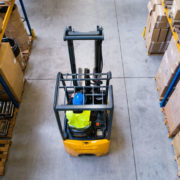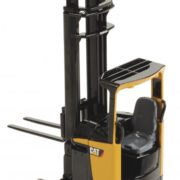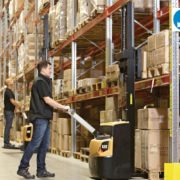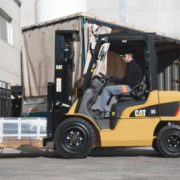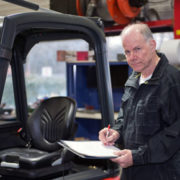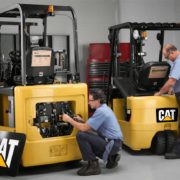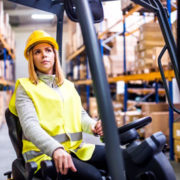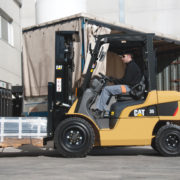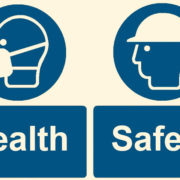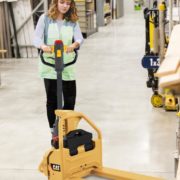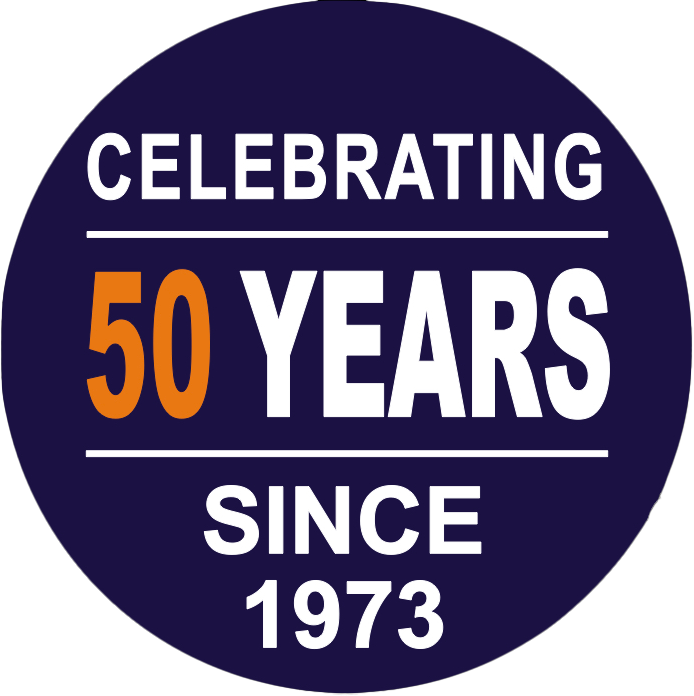A Review of 2019 in the Forklift Industry
With 2019 now at its end, there have been plenty of innovations, launches and even events to look back on. Here at Radnes Services we are a registerd CAT dealer and have seen CAT celebrate a year stuffed with exciting new products, prestigious awards and more.
As we hurtle towards 2020 with only a few weeks left to go, it’s well worth looking back and seeing all that has been achieved in the last year.
New product launches
Modified CAT counterbalance trucks
One of the most exciting launches for CAT came towards the end of the year, with modifications to their popular CAT 1.5-3.5 and 4.0-5.5 counterbalance trucks, both in LPG and diesel forms. These changes offer clear benefits over the old models, both in terms of convenience and comfort for users and in terms of functionality and health and safety. A new seat, more modern styling and a brand-new speed limiter all serve to modernise this industry workhorse and make it more appealing to their chosen audience.
CAT lift trucks range extensions
Alongside the modernisation of CAT’s counterbalance trucks, the brand has also been working hard to produce additions to their lift truck range with practical electric hand pallet trucks. Designed to work in tandem with their innovative range of modern forklifts – which debuted the previous year – these lift trucks are easy to handle and higher productivity than ever before. CAT has made these models both ergonomic and cost-effective, making them a must-have for warehouses everywhere.
NOL10P second-level order picker released to order
While CAT’s new range of second-level order pickers was announced right at the end of 2018, these versatile and efficient pieces of equipment became fully available at the start of 2019. They are designed specifically for purpose, with LiftComfort features and high functionality included as standard, the NOL10P plugs a gap in the CAT range by allowing for better controls, faster picking and better comfort overall. The new model is also far more comfortable to drive and use in general, making it ideal for countless warehouses and locations. ECO mode is even included to reduce energy consumption, with a slight reduction in operations required.
Exciting technologies
Developing battery technologies
As part of their display at IMHX 2019, CAT took a closer look at the state of the energy industry when it comes to their vehicles – with some surprising revelations. While the company is moving towards electric machinery, away from their diesel roots, evidence suggests that acid batteries are here to stay, with innovations expected alongside the development of more efficient and powerful lithium-ion batteries. The future is looking greener, and it seems CAT are doing their part.
Newer safety and comfort features
In 2019 CAT has really doubled down on improving the safety and ergonomic nature of their product range, allowing for extended use and more productive working. The development of the newer CAT 1.5-3.5 and 4.0-5.5 counterbalance trucks, in particular, proves that the company is more committed to improvement than ever before. Limiting features, the use of SecurGate and similar technologies has helped to make 2019 one of the safest years for the brand yet. The use of increased comfort features, such as new seats, ensure that CAT remains the best option out there for long working days or extended use of forklifts, trucks or anything else from their range.
Awards and events
IMHX 2019
Amongst the most significant events in the industry calendar is IMHX, a show that takes place every two years at the popular NEC venue. This year, CAT brought their all with the full range of new CAT lift trucks on display, as well as emphasising safety in the workplace. Visitors were able to get up close and personal with some of the newest and most exciting innovations in lift truck technology, as well as explore the developments into powering these exceptional machines.
Red Dot Design Award
CAT has talked away with a prestigious Red Dot Design Award this year, specifically for CAT designers on the work carried out for the EP14 electric counterbalance forklift. This award that was presented in Germany in July continues to show why CAT is top-of-the-line when it comes to thoughtful, functional and high-quality design. Chosen for its ergonomic feel, responsiveness and customised functions, the CAT 48V lift truck was a popular choice to win.
What 2020 will bring
With 2020 less than a month away, it’s unlikely we will hear any new announcements on products or technology this side of the new year. But the following year looks like it could be an exciting one for the forklift industry as a whole and CAT in particular. With forklifts and trucks now competing with EV – electric vehicles – for lithium-ion batteries and technologies, it would come as no surprise if newer batteries or more evolved forms of existing energies appear on the market. This may mean that CAT becomes eco-friendlier and more effective than ever in 2020, alongside other forklift brands.
With recent truck updates in 2019, 2020 may see some exciting new launches to fill in the niches in the CAT catalogue, as well as bringing their existing machinery up to the latest standards set by the CAT 1.5-3.5 and 4.0-5.5 counterbalance truck range. With a design award under their belt for the exceptional quality of the current-gen EP14, there’s no reason why CAT wouldn’t continue to develop and improve upon what’s right in front of them.
Wherever 2020 might bring us, one thing is for sure: CAT continues to be at the top of their game when it comes to forklift, truck and pallet technology – and we can’t wait to see where they’ll take us next. To view our full range of current generation CAT technology, visit our online catalogue here or contact us directly to find out more about what CAT could offer your business.
